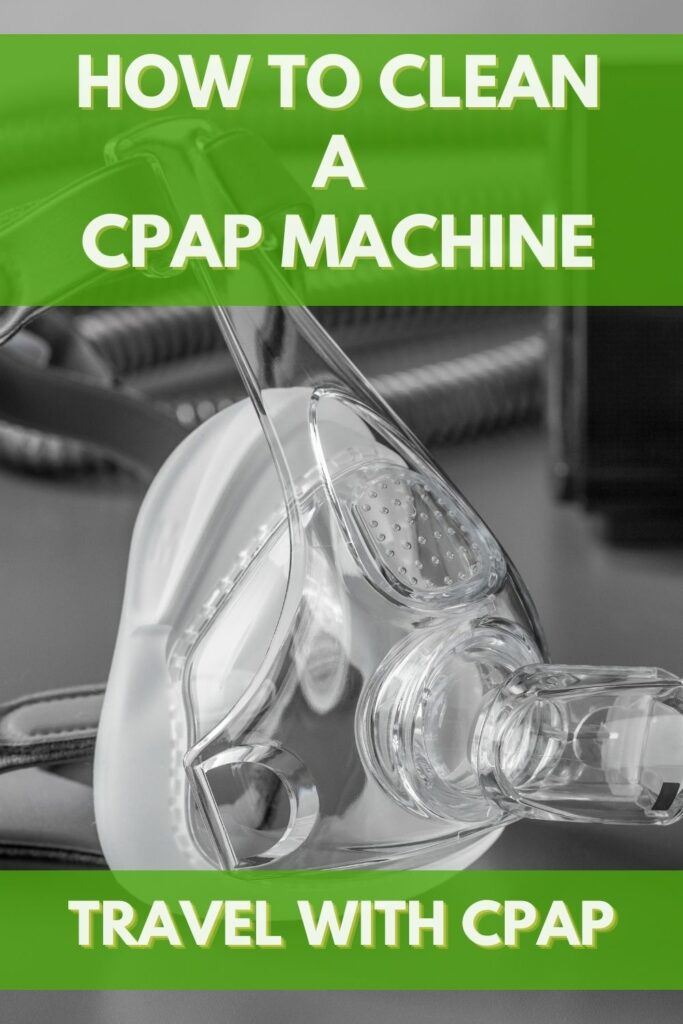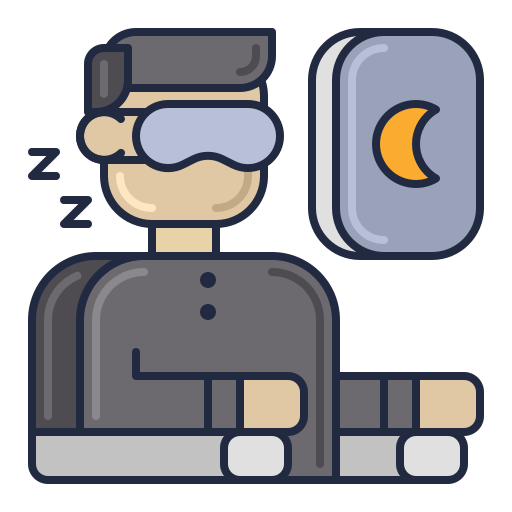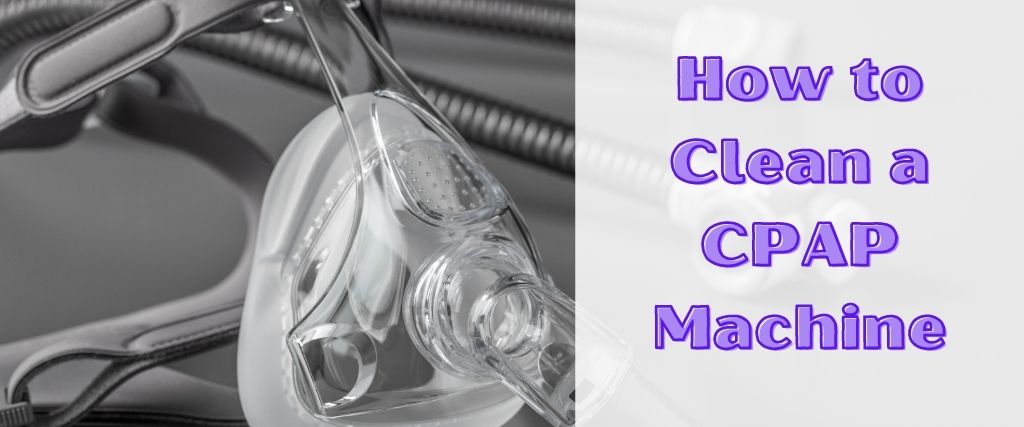As a person who owns a CPAP machine, I know that it can be a pain in the butt to clean. But, it’s essential to do so to maintain the quality of your device and protect yourself from infection. In this post, I’m going to walk you through the process of how to clean a CPAP machine step-by-step. So sit back, relax, and let me show you how it’s done.
The Importance of Cleaning your CPAP Machine

One of the most important things to remember about owning a CPAP machine is that you need to make sure it’s clean. That means keeping it free from debris, mold, and other gunk that can accumulate over time.
How often should you clean your machine? I’d suggest every week or so depending on how frequently you use it. If you wear your mask daily for 8 hours at a time, weekly cleaning should be plenty. Less if not used as much.
There are many reasons why this is important. Failing to keep up with maintaining your device will result in contamination within the breathing tube. This can also happen in the equipment housing itself causing bacteria buildup.
Again, this can lead to infection. It could also seriously damage the components inside of your device if left uncleaned. Even if you use your CPAP machine daily, it can still gather mold inside of the device over time which cannot be seen by the naked eye.
How to Clean the Mask and Headgear

The mask and headgear are the two main components that need to be cleaned regularly. They come into contact with your skin as well as collect a lot of dust, dirt, and other particles from the air.
They should be washed weekly. How you do so will depend on the type of material used in making them. If they cannot get wet, there is another way for cleaning which we will go over later.
Washing by Hand

First, let’s talk about washing the headgear and mask by hand:
It is common practice among CPAP users that the mask and headgear are cleaned by hand. This is done with warm water, antibacterial soap, a solution such as a dish soap, or hand sanitizer gel. The important part here isn’t what you use but that it has antibacterial properties so it can kill off any bacteria.
Some CPAP users have even used baby wipes to clean their masks and headgear instead of liquid cleansers. This works just as well but may leave a residue on your device. If you choose to use this method, make sure you let the mask dry completely before re-inserting it into the machine.
How to Clean the Tubing

The tubing that connects your mask to the machine is another important component of the device that needs maintenance. How you clean this will depend on whether or not it’s disposable or reusable.
Disposable Tubing – How to Clean a CPAP Machine
These usually come pre-packaged with every new CPAP machine purchase and are thrown out after 30 days. If it’s not specified, 30 days is the maximum safe time frame to use disposable tubing.
Reusable Tubing – How to Clean a CPAP Machine
These can be used indefinitely. The most important thing to keep in mind is that over time, the tubing will need to be replaced. How often you should do this depends on how well you take care of it and how much use it gets.
Most manufacturers suggest putting a small amount of vinegar in a bowl and dipping your tubing into it for 5-10 minutes before rinsing with warm water. Letting it soak in this for too long can damage the tubing because vinegar is acidic.
How to Clean the Humidifier

The final component of the CPAP machine that needs to be cared for is the humidifier. Some are disposable while others are reusable. How often you clean them will also depend on which one you have.
Disposable Humidifiers – How to Clean a CPAP Machine
These can only be used for a set amount of time and then thrown out. How long they last depends on the manufacturer but usually is around 30 days before needing to be replaced. They need to be washed weekly, but their components cannot get wet. How do you clean them if not with water?
The most common way CPAP users clean their disposable humidifiers is with vinegar. How much you put in the bowl will depend on what is recommended by the manufacturer, but it should be enough to let your humidifier sit in for 5-10 minutes before using a paper towel to wipe off any residue buildup.
Reusable Humidifiers – How to Clean a CPAP Machine
These are like reusable tubing and can be used indefinitely. How you should go about this is the same as the disposable humidifiers: by filling a bowl with vinegar and letting your humidifier sit in it for 5-10 minutes before using a paper towel to wipe off any residue buildup.
How to Sanitize your CPAP Machine

All the components of the machine should be cleaned at least once a week. How often you do this depends on your preferences, but it’s recommended that you wipe down each component with a vinegar-dampened paper towel every day to prevent dust and dirt from accumulating.
You can also buy an FDA-registered disinfectant spray for your CPAP machine.
These only need to be sprayed on the components without getting them wet and then wiped down with a paper towel. Some sprays even come pre-made in disposable wipes for convenience. How often you should do this depends on your preferences but most people recommend doing it at least once a week.
Tips for Making Cleaning your CPAP Machine Easier

- Use a CPAP cleaning device like The Stick. This device allows you to clean every component of the machine thoroughly and it is FDA approved for this purpose.
- Have multiple sets of headgear and masks so that you always have spares when one set needs to be cleaned.
- Use distilled water in the humidifier to avoid hard water build-up that can clog it.
- Consider getting a machine with soft tubing, as this is less likely to get kinks and tangles than standard tubing.
- Make sure you’re using the proper size tubing for your machine.
- Replace disposable components when they begin to show signs of wear and tear like holes or fraying.
Conclusion – How to Clean a CPAP Machine

By following the steps outlined in this article, you will be able to keep your CPAP machine’s components clean and working properly. A clean machine is less likely to cause irritation or worsen existing conditions like skin irritation, mouth dryness, congested sinuses, and allergies. And most importantly of all – it won’t make you sick!
Want an easier way to Clean your supplies? Check Out my Post Below:

